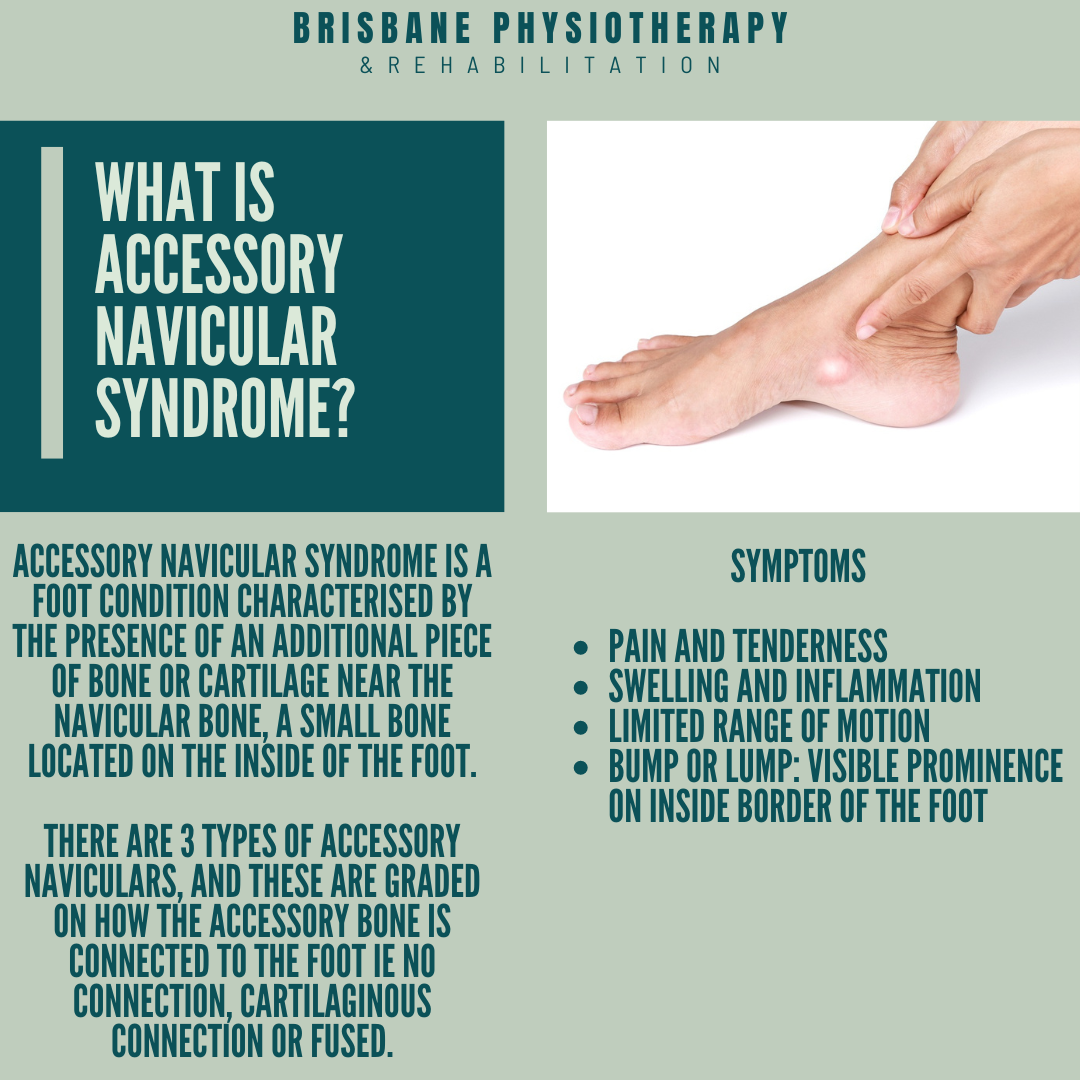What Is Accessory Navicular Syndrome?
Accessory navicular syndrome is a relatively common foot condition characterized by the presence of an additional piece of bone or cartilage near the navicular bone, a small bone located on the inside of the foot.
What is an Accessory Navicular?
An accessory navicular, also known as os tibiale externum, os naviculare, is an extra piece of bone or cartilage located adjacent to the navicular bone in the foot. This additional structure is present in a small percentage of the population and typically develops during childhood as a result of abnormal ossification (bone formation) or an accessory ossification center. While not all individuals with an accessory navicular experience symptoms, some may develop pain and discomfort, particularly during weight-bearing activities. There are 3 types of accessory naviculars, and these are graded on how the accessory bone is connected to the foot ie no connection, cartilaginous connection or fused.
Causes of Accessory Navicular Syndrome
Accessory navicular syndrome occurs when the accessory navicular bone becomes inflamed or irritated, leading to pain and discomfort in the midfoot region. Several factors contribute to the development of this condition, including:
Overuse: Engaging in activities that place repetitive stress on the midfoot, such as running, jumping, or dancing, can strain the soft tissues surrounding the accessory navicular bone, leading to inflammation and pain.
Foot Mechanics: Abnormal foot mechanics, such as flat feet (pes planus) or excessive pronation (rolling inward of the foot), can increase pressure on the midfoot and exacerbate symptoms of accessory navicular syndrome.
Footwear: Wearing shoes with inadequate support or fit inappropriately can increase pressure on the midfoot and aggravate symptoms of accessory navicular syndrome.
Trauma: Direct trauma or injury to the midfoot, such as a sprain or fracture, can exacerbate symptoms of accessory navicular syndrome and increase the risk of developing complications.
Symptoms of Accessory Navicular Syndrome
Accessory navicular syndrome typically presents with the following symptoms:
Pain and Tenderness: Persistent pain and tenderness in the midfoot region, particularly over the accessory navicular bone, which may worsen with activity or prolonged standing.
Swelling: Swelling and inflammation around the midfoot area, particularly on the inside of the foot, which may be accompanied by redness and warmth.
Limited Range of Motion: Difficulty moving the foot or toes due to pain and stiffness in the midfoot region, particularly during activities such as walking or running.
Bump or Lump: Visible prominence or enlargement of the accessory navicular bone, which may be palpable on the inside of the foot.
Diagnosis and Treatment of Accessory Navicular Syndrome
Diagnosing accessory navicular syndrome involves a thorough physical examination and may include imaging studies such as X-rays, ultrasound, or MRI scans to assess the structure and integrity of the accessory navicular bone and surrounding soft tissues. Treatment options for accessory navicular syndrome aim to alleviate pain, reduce inflammation, and improve foot mechanics. These may include:
Rest and Activity Modification: Modifying activities that exacerbate symptoms and allowing the affected foot to rest can help reduce inflammation and promote healing of the soft tissues surrounding the accessory navicular bone.
Ice Therapy: Applying ice packs to the affected area for 15-20 minutes several times a day can help reduce pain and inflammation.
Orthotic Devices: Custom orthoses or shoe padding can help correct foot mechanics and redistribute pressure away from the accessory navicular bone, reducing the risk of irritation and inflammation.
Footwear Modification: Wearing shoes with a wide toe box and that fit appropriately can help reduce pressure on the midfoot and improve comfort during activities.
Nonsteroidal Anti-Inflammatory Drugs (NSAIDs): Over-the-counter medications such as ibuprofen or naproxen may be prescribed to alleviate pain and reduce inflammation.
Physical Therapy: Stretching and strengthening exercises can help improve flexibility, strength, and stability in the foot and ankle, reducing the risk of recurrence.
In cases where conservative treatments fail to provide relief, or if there is significant damage to the accessory navicular bone, a healthcare professional may recommend additional interventions such as corticosteroid injections or, rarely, surgical removal of the accessory navicular bone.
Prevention of Accessory Navicular Syndrome
Preventing accessory navicular syndrome involves taking proactive steps to minimize risk factors and promote foot health. These may include:
Proper Footwear: Choosing shoes with adequate support, cushioning, and stability can help reduce pressure on the midfoot and decrease the risk of irritation and inflammation.
Orthotic Support: Using custom orthoses or arch supports can help correct foot mechanics and redistribute pressure away from the accessory navicular bone, reducing the risk of injury.
Gradual Progression: Gradually increasing the intensity, duration, and frequency of physical activities can allow the foot to adapt and reduce the risk of overuse injuries such as accessory navicular syndrome.
Foot Care: Practicing good foot hygiene, inspecting the feet regularly for signs of irritation or injury, and addressing any foot deformities promptly can help maintain foot health and prevent complications.
In conclusion, accessory navicular syndrome is a common foot condition characterized by inflammation and pain in the midfoot region. By understanding the causes, symptoms, and treatment options for accessory navicular syndrome, individuals can take proactive steps towards managing this condition effectively and maintaining optimal foot health. If you're experiencing persistent symptoms of accessory navicular syndrome, consult with a healthcare professional or podiatrist for a comprehensive evaluation and personalized treatment plan tailored to your needs.

